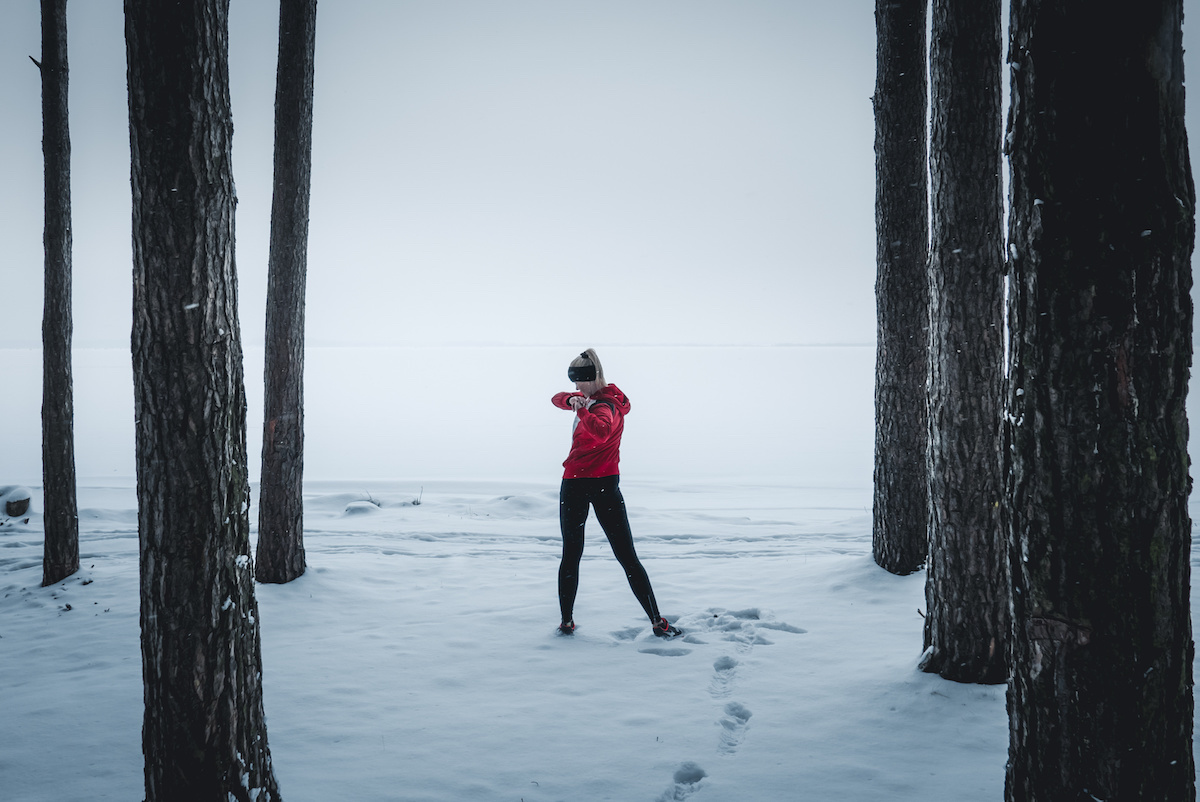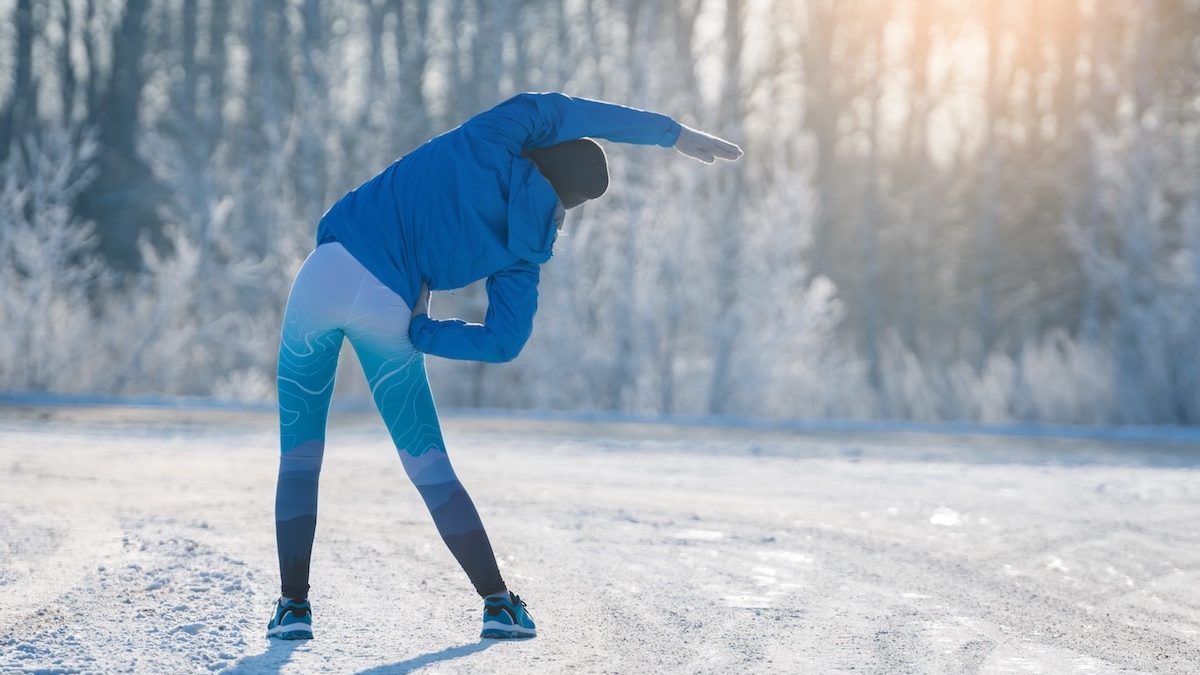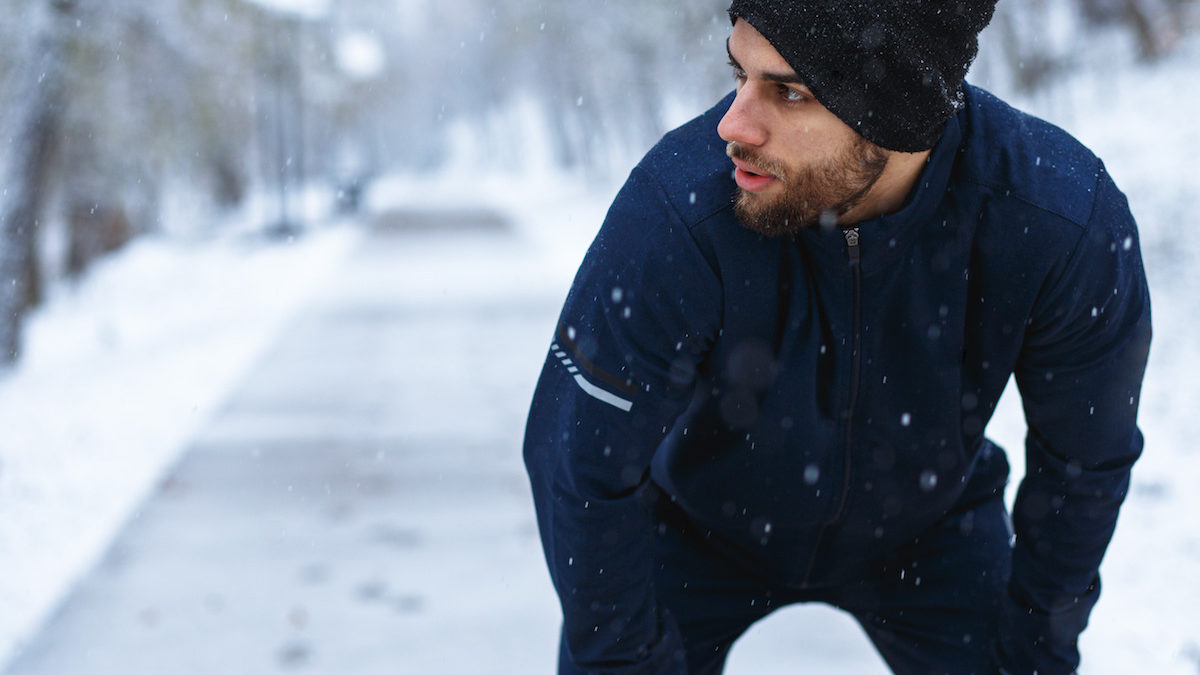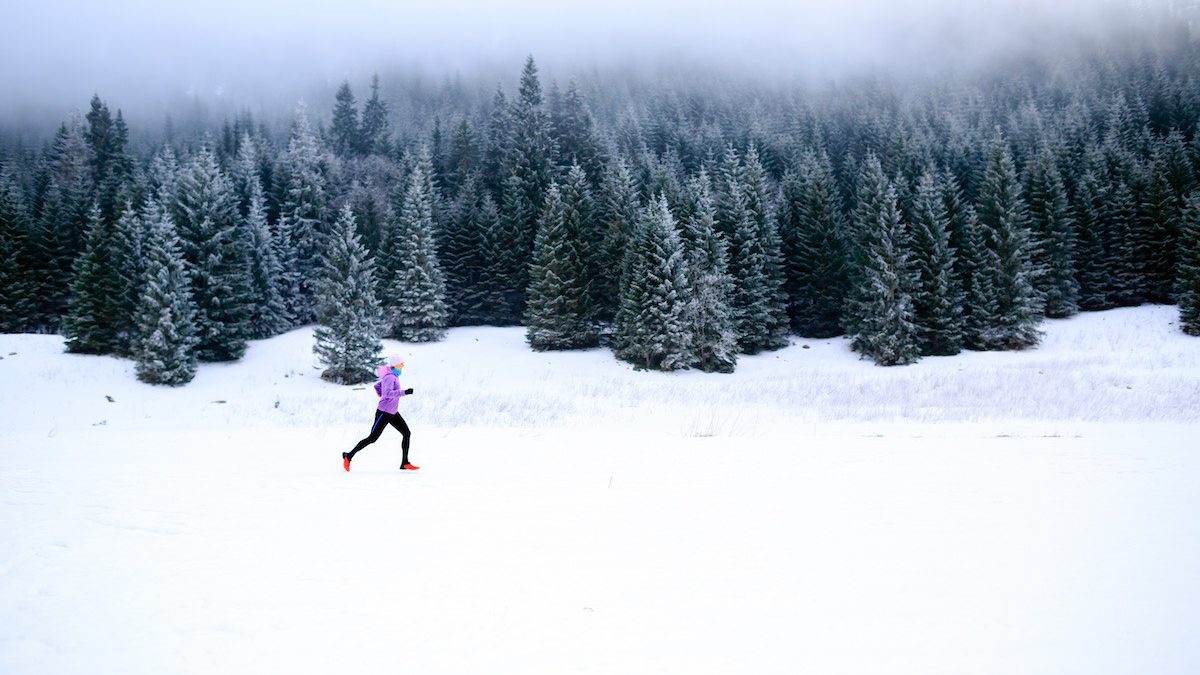8 Surprising Benefits of Training and Exercising in The Cold

Even the hardiest of athletes find exercising in winter testing. Dark mornings and darker nights can be a death knell on our motivation levels, as frosty roads and sub-zero temperatures drive us indoors.
However, it needn’t be that way. By breaking out of the living room and embracing the chill, you’ll unlock an arsenal of physiological and mental benefits that few other environments can offer, making a winter spent getting healthier a rewarding pursuit. That you’ll be doing laps of others burpee-ing at home is just a bonus.
Below, we’ll walk you through eight fascinating and transformative benefits of braving the cold this winter. Just don’t forget your gloves.
Run Longer to Last Longer
For many, the beginning of a new year spells the start of a new marathon training plan. Despite plummeting temperatures, outdoor runners have been dispelling the myth that a winter training plan will lead to illness, with a University of Bath study finding that endurance exercise may actually boost your immunity.
The study found that, during exercise, the number of illness-busting T cells increased tenfold, and are relocated to areas that are more susceptible to infection during cold weather — including your lungs. This correlates with findings from Mayo Clinic, which showed how regular bouts of outdoor exercise could reduce susceptibility to the flu by 20-30 percent.
You Could Metabolise Brown Fat
As described in Harvard Health Publishing, colder climes may help stimulate “metabolically active brown fat” that some adults retain since childhood. Brown fat is responsible for producing heat and maintaining body temperature. A 2014 study in the Journal of Clinical Endocrinology and Metabolism found that people carry higher genetic markers for brown fat during winter.
This, theoretically, suggests that by training in the cold, you can generate a higher calorie-burn. Add to this research from the University of Colorado that found cold weather helps your metabolism ‘switch’ fuel sources from carbohydrates to fat, and that 5k run becomes a no-brainer.

You’ll Top-Up Your Vitamin D
We get it — it’s harder to spend more time outside once winter rolls around. But, by heading outdoors and embracing the chill, you can still get the recommended 25 to 50 micrograms of vitamin D that health experts recommend. Your heart will thank you, too —a Harvard University study found a direct correlation between healthy vitamin D levels and a reduced risk of cardiovascular issues. Warming news, you’ll agree.
Air Max
There are few things more biting than winter air — embrace the chill, however, and you’ll reap an impressive aerobic benefit. As your blood vessels narrow in colder temperatures, your heart and lungs have to work harder to circulate blood and oxygen.
This, while slightly taxing, helps to improve the aerobic function of your muscles, helping them draw in more oxygen during bouts of exercise. A Northern Arizona University study found that cold weather training could lead to a 34 percent increase in your V02 max, as well as helping your running pace increase by a not-so-insignificant 29 percent.

UK Winter Running Conditions Could Be Ideal
“Studies [at the University of Aberdeen’s medical school] have shown that the ideal temperature for making endurance performance gains is actually 10-11°C,” said Chris Tyler, senior lecturer in environmental physiology at Roehampton University, southwest London to Runner’s World. “Either side of that and you start experiencing a drop in how long you can keep going at the same intensity.”
It’s thought that this is due to your heart rate as, in colder weather, your body doesn’t need to pump blood to your body’s peripheries, so you enjoy a greater central volume of blood. “For the same pace, you can run that at a lower heart rate – up to around 15 beats per minute fewer,” explains Tyler. Use this extra energy to make your runs further, or try new ways of training, including hill reps and fartlek sessions.
You’ll Fight Seasonal Affective Disorder (S.A.D.)
S.A.D., or seasonal depression, is a type of depression that becomes more severe as winter approaches. It’s currently estimated that around 10-20 percent of people in the UK experience “mildly debilitating” forms of S.A.D., with symptoms that include a persistent low mood, a loss of interest in everyday activities, and feelings of lethargy, despair, and guilt.
Grasp winter training, though, and you’ll release a one-two punch of mood-boosting hormones noradrenaline and beta-endorphin, which have been found to help fight seasonal depression and bring about a welcome hit of Vitamin D.

You’ll Improve Your Endurance
“In colder temperatures, your heart doesn’t have to work as hard, you sweat less, and expend less energy,” explains Dr. Adam Tenforde, an assistant professor of sports medicine and rehabilitation at Harvard-affiliated Spaulding Rehabilitation Network. “All of which means you can exercise more efficiently.” This correlates with findings from Northern Arizona University which found that exercising in cold weather ‘teaches’ your body to use oxygen more efficiently.
Just Keep Swimming
If your local pool or leisure centre has closed, you may want to jump on the trend for open-water swimming, a sport that surged in popularity in 2020. A University of Cambridge study of Hampstead Heath lido users has suggested that swimming in cold water could help protect the human brain from developing dementia.
Researchers found that a “cold-shock” protein (RBM3), triggered when study mice were exposed to near-hypothermia temperatures, could be crucial to developing treatments that delay degenerative conditions such as dementia.
High levels of RBM3 were also found in open-water swimmers tested across three winters (2016, 2017, 2018). “We test RBM3 in human brains in patients having surgery and (we found) it does go up, it goes up in the babies, and it goes up in the swimmers,” said Giovanna Mallucci, associate director of the UK Dementia Research Institute at the University of Cambridge, of the ‘therapeutic hypothermia’ study. “The importance here is that we have a cold-shock response in humans that is like that in mice.”

The Back Garden Workout Worth Braving The Cold For
Ready to make the most of winter’s physiological power-ups? Michael Jennings, trainer at Airborne Fit, a functional fitness community in Suffolk, walks you through an outdoor workout that’s sure to bring the heat, no matter the temperature outdoors.
The best part? You can do it with or without weights.
“The idea is to keep moving and keep the body warm in the cold. It’s just 10 minutes, so get the work done,” says Jennings. “You’ll be alternating between upper-body focused moves into lower body exercises. Changing the stimulus should allow you to keep the intensity up throughout. No muscle is left unworked.”
Warm-up:
2 Rounds
5 x Walkout to 2 Shoulder Taps
10 each side Spider Stretch aka World’s Greatest Stretch
10 x Gorilla Stretch
10 x High Knees on the spot into 10 Star Jacks
Bodyweight
10 Minute AMRAP (as many rounds as possible)
12 x Jump Lunges or Reverse Lunges (if you don’t want the impact)
10 x Press ups
8 x Air Squats
6 x Burpees
4 x 8 Cross Climbers (each leg) into 2 Commandos
With Weights
EMOM (Every Minute, On the Minute): 16 Minutes
“The EMOM structure is going to keep you accountable and is the most effective way to squeeze in a workout when time isn’t on your side,” explains Jennings. “The thrusters are a full-body move to get every muscle firing, and no workout is complete without press-ups. The reverse lunges will help translate to stronger runs and the burpees will ensure you’re warm all over when you’re exercising outdoors.”
Minute 1: 15 Thrusters
Minute 2: 18 Press ups (6 wide grip, 6 shoulder width, 6 close grip)
Minute 3: 14 Alternating Reverse Lunges (if you have a kettlebell, hold it in front of your chest. If dumbbells, hold down by your sides)
Minute 4: 8 Burpees over weight


















